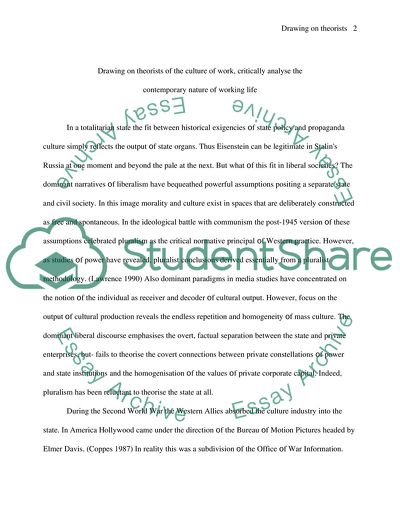Cite this document
(Drawing on Theorists of the Culture of Work Literature review, n.d.)
Drawing on Theorists of the Culture of Work Literature review. https://studentshare.org/sociology/1710792-drawing-on-theorists-of-the-culture-of-work-critically-analyse-the-contemporary-nature-of-working-life-media-studies
Drawing on Theorists of the Culture of Work Literature review. https://studentshare.org/sociology/1710792-drawing-on-theorists-of-the-culture-of-work-critically-analyse-the-contemporary-nature-of-working-life-media-studies
(Drawing on Theorists of the Culture of Work Literature Review)
Drawing on Theorists of the Culture of Work Literature Review. https://studentshare.org/sociology/1710792-drawing-on-theorists-of-the-culture-of-work-critically-analyse-the-contemporary-nature-of-working-life-media-studies.
Drawing on Theorists of the Culture of Work Literature Review. https://studentshare.org/sociology/1710792-drawing-on-theorists-of-the-culture-of-work-critically-analyse-the-contemporary-nature-of-working-life-media-studies.
“Drawing on Theorists of the Culture of Work Literature Review”. https://studentshare.org/sociology/1710792-drawing-on-theorists-of-the-culture-of-work-critically-analyse-the-contemporary-nature-of-working-life-media-studies.


